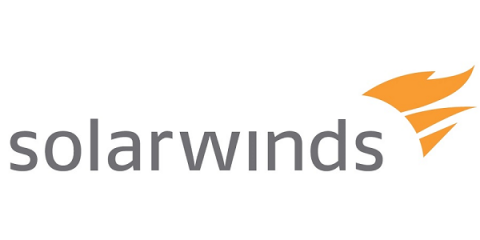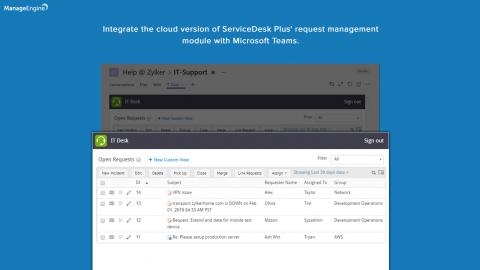Operations | Monitoring | ITSM | DevOps | Cloud
%term
Top 5 Cloud Security Trends Revealed
Cloud security is becoming one of the most pressing issues for many modern organizations as they move to the cloud. According to Cloudneeti’s 2019 Cloud Security Trends and Predictions report, by 2020, 41% of overall workloads will run in public clouds. Defending against unauthorized data exposure and securing data, applications, and infrastructures across the cloud environment is a must. It is the responsibility of every organization and should be taken seriously.
IT analytics in 90 seconds: Track alarm trends and perform investigative analysis
Introducing ServiceDesk Plus Cloud for Microsoft Teams
As much as service desk teams encourage use of their IT self-service portals, many end users still prefer the conventional method of calling the IT service desk team or walking in to report an IT issue. Although this solves the immediate problem, it reduces service desk efficiency and makes tracking tickets and other administrative tasks a nightmare for IT technicians.
Building a Smarter Escalation Matrix with Uptime.com
The idea behind an escalation matrix is simple: the situation requires greater authority to resolve. Authority can take many forms, including experience with a particular toolset or simply the proper permissions to flip the right switches. Therefore, escalation must involve putting the proper information into the right person’s hands (well, device).
3 reasons you fail at communication in the workplace and how to improve
Introducing External Services in Opsgenie, powered by Statuspage
As IT and DevOps teams rely more heavily on third-party services, the likelihood of an external incident affecting your customers increases. The 2017 Amazon S3 outage comes to mind as a particularly large downtime event that took thousands of websites down with it. When things go wrong with either an internal or external service, the right people need to be alerted to properly respond to the issue and communicate with customers.
Grafana Labs at KubeCon: Loki's March Toward GA
At KubeCon + CloudNativeCon EU this week, Grafana Labs VP Product Tom Wilkie gave a talk about Loki, the Prometheus-inspired service that optimizes search, aggregation, and exploration of logs natively in Grafana. In case you missed it, here’s a recap. Wilkie’s talk is an overview of how and why Grafana Labs built Loki and the features and architecture the team built in. Our policy is to develop projects in the open, so the design doc has been publicly accessible since development started.
Ensure Customer Happiness with these 5 Powerful Test Actions
Our fully managed Selenium testing platform allows you to continuously check your website to ensure it’s working as expected. Not just the fact that it’s online, but that your customers can perform tasks such as registering or adding products to the basket. We use real browsers, such as the latest versions of Chrome and Firefox and test from 18 global testing locations.











